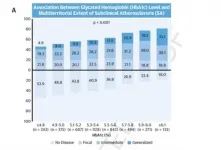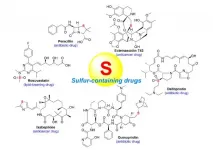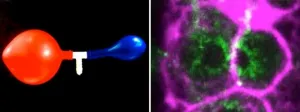(Press-News.org) Methane emissions from North American livestock may be routinely undercounted, a new analysis by researchers at New York University and Johns Hopkins University finds. The work also notes that in developing countries, where animal agriculture is becoming increasingly industrialized, methane emissions could rise more than expected.
These assessments are based on a review, appearing in the journal Environmental Research Letters, of eight existing studies.
Methane is a global warming gas even more powerful than CO2. Its amount and lifetime in the atmosphere are smaller than CO2, but quantities are still increasing. The United Nations has recently urged that reducing methane emissions is a highly effective way of rapidly reducing global warming.
The U.S. Environmental Protection Agency (EPA) reports these emissions in a national greenhouse gas inventory every year using complex models. But, the researchers write, existing methods that the EPA and other international agencies use to estimate methane emissions from animals are not corroborated by measuring concentrations of the gas in the air.
This omission is significant.
Some previous studies have monitored methane directly in the air using tall towers, airplanes, and satellites, collected above and downwind of animal production facilities. The recent Environmental Research Letters analysis compiled and reviewed several of these atmospheric studies over North America through the last decade. These studies consistently found more methane than the EPA and other agencies expected coming from livestock, in amounts ranging from 39 percent to 90 percent higher than previously estimated.
"Back in 2013, we found that atmospheric methane emissions were higher from livestock and oil and gas producing regions than the EPA was reporting," says Scot Miller, an assistant professor at Johns Hopkins University and coauthor of the Environmental Research Letters paper. "Since then, the models and atmospheric measurements don't appear much closer to coming into agreement. It's increasingly likely that methane emissions from farmed animals could be higher in North America than is often being reported."
Methane comes from cows' and sheep's digestion, as well as from stockpiles of manure from all farmed animals. In the U.S. and Canada, animal production is nearly entirely divorced from other farming practices like crop production. Pigs and chickens are raised in crowded sheds and their manure is stored in large stockpiles. Dairy cows are crowded into milking parlors and produce more manure than some small cities.
These industrialized changes to rearing animals allow producers to use less feed like hay, corn, and soybeans, translating to fewer resources needed on farms. It was long assumed by the scientific community that this also translates into lower greenhouse gas emissions, too.
"North American meat and dairy producers often tout improvements in their efficiency, claiming that concentrated feeds and confinement have reduced greenhouse gas emissions greatly over the past few decades," observes Matthew Hayek, an assistant professor in NYU's Environmental Studies Department and a co-author of the paper. "Our findings throw those claims into doubt. Individual cows may be belching and emitting less, but that doesn't necessarily translate to entire herds and warehouses of confined animals, and their stockpiles of manure, emitting less."
These assessments have international importance as well, the authors note. Since re-entering the Paris Agreement in 2021, the U.S. is preparing to reduce emissions from all greenhouse gases, including those from animal agriculture.
"This research indicates a need to reexamine or improve reporting methods for methane, which are critical to tracking progress over time," Hayek says.
Other countries may have cause for concern in the future, too. For instance, throughout Asia, meat and dairy consumption is on the rise, and this production is becoming increasingly industrialized. The United Nations Food and Agriculture Organization previously predicted that East and Southeast Asia's animal emissions will peak around 2030 because U.S.-style technological efficiency in Asia could reduce emissions afterward.
The findings reported in Environmental Research Letters, however, indicate that emissions could actually continue to rise through the year 2050.
"This would further undermine international goals to limit global warming, surpassing 1.5° or 2° Celsius even more quickly than expected," Miller says.
The authors highlight the role of international agencies, development banks, and corporations in hastening the transition toward industrial animal agriculture production.
"This evidence suggests that the banks and government agencies who are funding intensive animal facilities' expansion might be accepting more climate risk than they realize," says Hayek. "Policymakers should consider methane emissions along with a gamut of other major environmental issues stemming from concentrated meat and dairy production, including water pollution and infectious animal-borne disease breakouts, to inform policies that guide food systems toward a better direction."
INFORMATION:
DOI: 10.1088/1748-9326/ac02ef
RNA sequencing is a powerful technology for studying cells and diseases. In particular, single-cell RNA sequencing helps uncover the heterogeneity and diversity of our body. This is the central technology of the "Human Cell Atlas" in its quest to map all human cells. However, single-cell RNA sequencing reaches its limits in very large projects, as it is time-consuming and very expensive. To address these challenges, scientists from the research group of Christoph Bock, principal investigator at the CeMM Research Center for Molecular Medicine of the Austrian Academy of Sciences and professor at the Medical University of Vienna, developed ...
Researchers at the Biomedicine Institute of Seville (IBiS) have discovered a new mechanism of Alzheimer's disease that disorganises the blood vessels around amyloid plaques, one of the characteristic features of the disease. The study, published in the international journal Nature Communications, was led by the laboratory of Dr. Alberto Pascual, from the Neuronal Maintenance Mechanisms Group at IBiS and was chiefly carried out by María Isabel Álvarez Vergara and Alicia E. Rosales-Nieves.
Relevance of the finding
Alzheimer's disease is the leading cause of dementia worldwide. In Spain, its incidence is increasing dramatically as the population ages and yet, unfortunately, the origin of the disease is still unknown.
The mechanism put forward ...
New research has found that adolescents with higher levels of an omega-3 fatty acid in their blood were less likely to develop psychotic disorder in early adulthood, suggesting that it may have a potential preventative effect of reducing the risk of psychosis.
The study, led by researchers from RCSI University of Medicine and Health Sciences, is published in END ...
The routine use of the glycosylated hemoglobin test to track blood sugar levels in the general population can identify individuals with more advanced atherosclerotic disease. Currently used in the diagnosis and management of diabetes, glycosylated hemoglobin can provide a useful estimate of atherosclerotic disease, and therefore of cardiovascular risk, in individuals without diabetes with or without possible prediabetes. This is the main finding of a study carried out by scientists at the Centro Nacional de Investigaciones Cardiovasculares (CNIC).
The advance heralded by the CNIC study is the use of this blood-sugar measure in apparently healthy middle-aged ...
Skoltech researchers used the resources of the university's Zhores supercomputer to study a new method of generating gamma-ray combs for nuclear and X-ray photonics and spectroscopy of new materials. The paper was published in the journal Physical Review Letters.
A gamma-ray comb is a series of short bursts that, when plotted as intensity versus frequency, look like sharp and equally spaced teeth of a comb. Generating these combs at high brightness in the gamma-ray domain has been challenging because of something called ponderomotive spectral broadening - an effect that destroys the monochromaticity that allows gamma-ray sources to be used in nuclear spectroscopy, medicine, and other applications.
Sergey ...
The intriguing chemistry and biology of sulfur?containing natural products from marine microorganisms (1987-2020)
https://doi.org/10.1007/s42995-021-00101-2
Announcing a new publication for Marine Life Science & Technology journal. In this review article the authors Yang Hai, Mei?Yan Wei, Chang?Yun Wang, Yu?Cheng Gu and Chang?Lun Shao from Ocean University of China, Qingdao, China and Syngenta Jealott's Hill International Research Centre, Berkshire, UK consider the chemistry and biology of sulfur?containing natural products from marine microorganisms.
Natural products derived ...
The National Institute of Polar Research (NIPR) publishes Polar Science, a peer-reviewed quarterly journal dealing with polar science in collaboration with the Elsevier B. V.. The most recent issue (Vol. 27 published in March 2021) was a special issue entitled "Arctic Challenge for Sustainability Project (ArCS)," which featured the former national (nation-wide) Arctic research project in Japan. The full text of this issue is freely accessible worldwide for a limited time until 10 September 2021.
The Arctic Research Project "Arctic Challenge for Sustainability (ArCS)" was carried out from September 2015 to March 2020 as a national flagship project funded by the Ministry of Education, Culture, Sports, ...
In past studies, researchers have found that C. elegans gonads generate more germ cells than needed and that only half of them grow to become oocytes, while the rest shrinks and die by physiological apoptosis, a programmed cell death that occurs in multicellular organisms. Now, scientists from the Biotechnology Center of the TU Dresden (BIOTEC), the Max Planck Institute of Molecular Cell Biology and Genetics (MPI-CBG), the Cluster of Excellence Physics of Life (PoL) at the TU Dresden, the Max Planck Institute for the Physics of Complex Systems (MPI-PKS), the Flatiron Institute, NY, and the University of California, Berkeley, found evidence to answer the question of what triggers this cell fate decision between life and death in the germline.
Prior studies ...
Researchers from Trinity College Dublin have developed a novel set of tools for designing vitamin D clinical trials that capture large seasonal and population-wide differences in vitamin D status, typically seen in individuals. Their study published in the journal Scientific Reports (today, Monday 31st May 2021) provides a framework for clinical trials to establish whether vitamin D supplementation is effective against a given disease.
The study also reveals that many trials which failed to find any association between vitamin D and disease prevention may have been underpowered or conducted without enough subjects to detect a benefit of vitamin D.
You can read the full journal paper here: https://go.nature.com/3uERjgO
The ...
YouTube is a treasure trove of virtual reality fails: users tripping, colliding into walls and smacking inanimate and animate objects. By investigating these "VR Fails" on YouTube, researchers at the University of Copenhagen have sought to learn more about when and why things go sideways for users and how to improve VR design and experiences so as to avoid accidents.
Millions of YouTube viewers have enjoyed hearty laughs watching others getting hurt using virtual reality - people wearing VR headsets, falling, screaming, crashing into walls and TV sets, or knocking spectators to the floor. Some of us have even been that failing someone. Now, videos of virtual reality mishaps, called "VR Fails", ...




